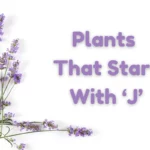Many of us may immediately think of the xylophone or an X-ray when asked to name a term that begins with the letter X. We’d probably just scoff if asked to name a flower whose name begins with X. Such plants do, nevertheless, exist! Discover some of the unusual flowers that begin with X by reading on.
Flowers That Start With X – List of Flowers Begins with the Letter ‘X’

There are flowers that begin with the letter X, just like every other letter in the alphabet. Flowers with names that begin with the letter “X” offer a wide variety of alternatives, from the yellow-eyed Xyris Difformis to the burgundy Xeranthemum.
Every house should appear stunning and be in fantastic condition. This is what flowers can do to any house, garden, park, etc.
Flowers are recognized to make their surroundings more attractive and elegant. They are less well-known for their biological trait, which encourages plant reproduction.
Some of these flowers have also been revered as food, medicine, ritual objects, objects of affection, and other things.
Xanthisma
The aster family member Xanthisma has roughly ten different species. The majority of xanthisma grow in the spring and have small, bright yellow flowers that resemble daisies or sunflowers. The term “sleepy daisy” relates to the flower’s propensity to close up at night and is one of its common names. Both annuals and perennials fall within this genus, and some species have petals that are white or purple instead of yellow.
Xanthisma, a native of the U.S. and Mexico, grows best in sandy, well-draining soil, and direct sunlight. It is a fantastic choice for xeriscaping because it can withstand drought and dry soil.
Xeranthemum
Xeranthemum is a different genus of aster that has silvery-green foliage and vibrant, papery blooms. The six different species normally produce their tubular or daisy-like blossoms in July to early fall, which are good for both fresh and dried-cut flowers. The blossoms range in color from white to purple. Before planting, verify with your local extension office as some species, like immortelle, can become invasive in many places.
The optimal conditions for growing this native to the Mediterranean and southwestern Asia are medium to dry soil and full sun.
An assortment of silvery flowers belonging to the sunflower family make up the Xeranthemum annuum. It is indigenous to Northern Europe and Western Asia and bears heads with purple tubular blooms.
Because it represents eternity and immortality, it is also known as yearly eternal or Immortelle. This lovely flower, whose name begins with the letter X, adds elegance to any setting.
Xerochrysum
The flowering plant xerochrysum, often known as strawflower or the everlasting flower, has vivid, papery, daisy-like flowers in the colors yellow, white, red, orange, and pink. The term “everlasting flower” is appropriate given that xerochrysum blooms from June until the first months of winter, keeps its shape and color when dried, and holds up well as a cut flower.
Xerochrysum, a native of Australian grasslands, grows readily in dry to medium, well-draining soil in full sun to light shade.
The genus Xerochrysum, which belongs to the Asteraceae family of flowering plants, has roughly 80 species of shrubs and perennial herbs.
With alternating leaves and yellow flowers that turn scarlet as they develop, they have a height range of 30 to 150 cm.
Because of its lovely downy foliage and clusters of sizable, bright yellow, chrysanthemum-like blooms that appear intermittently throughout the majority of the year, Xerochrysum is grown as a groundcover in temperate gardens.
Xanthoceras
Chinese native Xanthoceras, often known as yellowhorn, is a deciduous tree or shrub. Small white flowers with star-like shapes bloom in May, revealing throats that are yellow while young and mature to be maroon. All parts of the xanthocera plant, including the seeds, flowers, and foliage, are edible. The fruits that come next look like buckeyes but taste like chestnuts.
Xanthoceras prefers loamy, well-draining soil in a warm, sunny area, but it can endure a variety of conditions due to its natural habitat of rocky slopes.
Shrubs in the genus Xanthoceras include Xanthoceras Sorbifolium, sometimes known as Yellowhorn.
Its perennial nature ensures that it will continue to expand.
The shrubby habit, grayish-green leaves, yellow to orange flowers, and spherical fruits of Xanthoceras Sorbifolium serve as indicators of the plant.
Xerophyllum
Xerophyllum, also referred to as bear grass or turkey beard, is a wild plant that thrives in western North America. It is frequently one of the first plants to return following a wildfire. On top of long stalks, dense, bushy clusters of tiny, white flowers with a faint fragrance bloom in the spring or early summer. Include these special plants in perennial gardens or areas with wildflowers.
Although it can handle moisture, Xerophyllum loves full sun and rich, sandy, or loamy soil with adequate drainage.
The Xerophyllum tenax, often known as bear grass, has six sepals and six stamens on each of its flowers. Western American explorers of the 19th century initially referred to the Xerophyllum tenax as bear grass.
They were a part of the expedition led by Lewis and Clark. The bear-grass is not grass, despite what its name suggests.
This flower can endure surface ground burn and thrives in scorched environments. Native Americans also used it to weave baskets and adorn their jewelry in addition to using it as food.
Xylosma
Xylosma is typically prized for its bronzy new growth and usage as a hedge, but it also produces unnoticeable, yellow-green flowers that are an important source of food for bees. Birds are drawn to the little, black fruit that comes next. Xylosma has a free, open habit with a height and width of 10 to 12 feet, but its evergreen foliage is resilient to training and pruning.
Xylosma is a low-maintenance shrub that can withstand heat and poor soils. It thrives when planted in full to part sun conditions with regular watering in USDA zones 8 to 11.
The Xylosma plant, pronounced either z-eye-las-mah or z-eye-ilohs-mah, alters the appearance of a landscape.
Its width and height are two of its most notable characteristics. So, choose the xylosma plant if you’re looking for flowers to assure safety in your home. To keep the desired shape, frequent shearing is necessary.
Xyris
Only 21 of the more than 250 xyris species that exist in the world are indigenous to North America. Xyris is commonly known as yellow-eyed grass because of its leaves, which resemble grass, despite the fact that it is a monocot and not grass at all. One tiny, yellow, three-petaled blossom is produced by each tall, slender stem.
Xyris is often a wetland plant that needs moist, well-draining soil in a sunny site. In warmer climes, it also benefits from a little afternoon shade.
Perennials with summer blooms called Xyris flowers are members of the Xyridaceae family.
In North America, Central America, and the West Indies, they can be found in open spaces and damp soils.
Although their purple flowers may be their most distinctive feature, they can occur in many colors of white.
Due to their sessile leaves, which emerge from the base of the flower stalk, Xyris flowers have a very distinctive appearance.
Xylobium Variegatum
White and yellow flowers called Xylobium variegatum are indigenous to Venezuela, French Guiana, Columbia, Bolivia, and Peru.
This plant needs to be kept between 40 and 70 percent in order to grow because it needs a lot of water. The leaves of the Xylobium variegatum must not come into contact with water when being watered.
Its lip is yellow and speckled during a bloom, with white petals. Additionally, it should be noted that the Xylobium variegatum requires substantially less irrigation during winter.
Join 25,000+ smart readers—don’t miss out!








